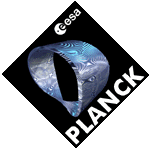Planck Extragalactic Point Sources Working Group (WG 6) |
 |
Suomeksi
Planck Extragalactic Point Sources Working Group (WG 6) |
 |
| All Planck related work is divided into eight Working Groups. Their purpose is to make sure that all necessary work is done, in time, and also keep track on the amount of work and time dedicated to the project by each team and individual. The Planck Science Team will nominate Planck Scientists based on the work within these Working Groups. Anne Lähteenmäki was nominated as a Planck Scientist in 2005. Our Metsähovi/Tuorla team operates in the Extragalactic Point Sources Working Group (WG 6). It is further divided into five subgroups as follows:
6.1 Quick Detection System (QDS)Working Group 6.1 defines and implements a software package that will extract interesting sources from the time ordered data stream of Planck within a week or two from the initial observation. The primary products of the Planck mission are the cosmic microwave background radiation maps that will be released in approximately two years after launch. The Early Release Compact Source Catalog (ERCSC) of extragalactic point sources will not be ready until 9 months after the launch. However, active galactic nuclei vary fast (typically from a few days to a few weeks) and this is why it is important to arrange follow-up observations as soon as possible after the initial detection. The QDS will enable us to do just that!The QDS will extract those sources fulfilling a certain criteria, for example, sources that are above a certain flux limit, from the time ordered data stream. Therefore we can detect sources that are exceptionally bright or variable. As we will get this information within a week or two from the initial observation, we have sufficient time to arrange follow-up observations with other instruments, for example, with X-ray or gamma-ray satellites or ground based telescopes. The observations of active galactic nuclei made by our group also play an important role in WG 6.1. The scientific analysis of the data will help us to define those triggering criteria which the QDS will use for selecting interesting sources for further studies!
6.2 Extragalactic Sources: Ancillary Catalog, Pre-launch Surveys and Follow-up ObservationsThis working group is responsible for definition and construction of a pre-launch catalog that contains information of sources that will be detected by Planck, for example, the positions, fluxes, polarization etc. The knowledge of the nature, number and behaviour of foreground sources is essential for the success of the Planck primary mission which is the measurement of the cosmic microwave background radiation. The catalog will be constructed using existing catalogs and also new pre-launch surveys and observations. The purpose of pre-launch surveys is to measure all sources within a certain area in the sky. Another method is to observe defined samples of classes of sources, for example BL Lac objects and GPS sources. WG 6.2 is also in charge of follow-up observations of sources detected by Planck, with both ground based instruments and other satellites.The Metsähovi/Tuorla team is currently observing several samples of sources for the Pre-launch Catalog, some of them in cooperation with our collaborators around the world.
6.3 Modelling, Analysis, and Statistical Tools for the Extraction of Astrophysical DataWG 6.3 develops methods for modelling and data analysis of extragalactic point sources detected by Planck. First step is the definition of classes of sources we are interested in, and then what methods are suitable for the extraction of information out of the sources in question. Last, we need tools for analysing this data, for example, statistical tools etc.Our Metsähovi/Tuorla team assists in the development of special tools for variable sources. 6.4 Follow-up with HerschelThis working group is responsible for defining and executing follow-up programmes of particularly interesting extragalactic sources observed by Planck with the Herschel satellite. Herschel operates at infrared frequencies. The two satellites will be launched together. Our team is responsible for the planning of follow-up observations of strong variable sources, in cooperation with WG 6.1. Preliminary proposals were submitted to the Planck Science Team in spring 2006.6.5 Simulations of Compact Source Fields and Cosmic BackgroundsWG 6.5 is in charge of simulations of bright, extragalactic point sources and background emission due to superimposed faint sources at radio and submillimetre frequencies. The simulations are used for testing the satellite and its data processing system before the launch. Our Metsähovi/Tuorla team participates in developing simulations of variable sources, in cooperation with WG 6.1. |